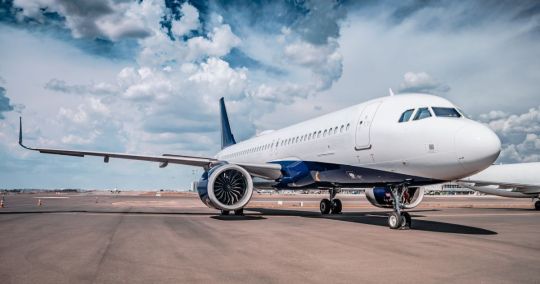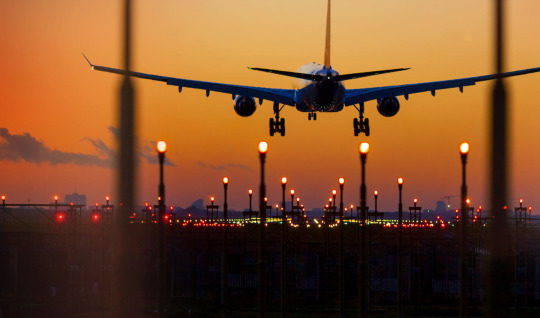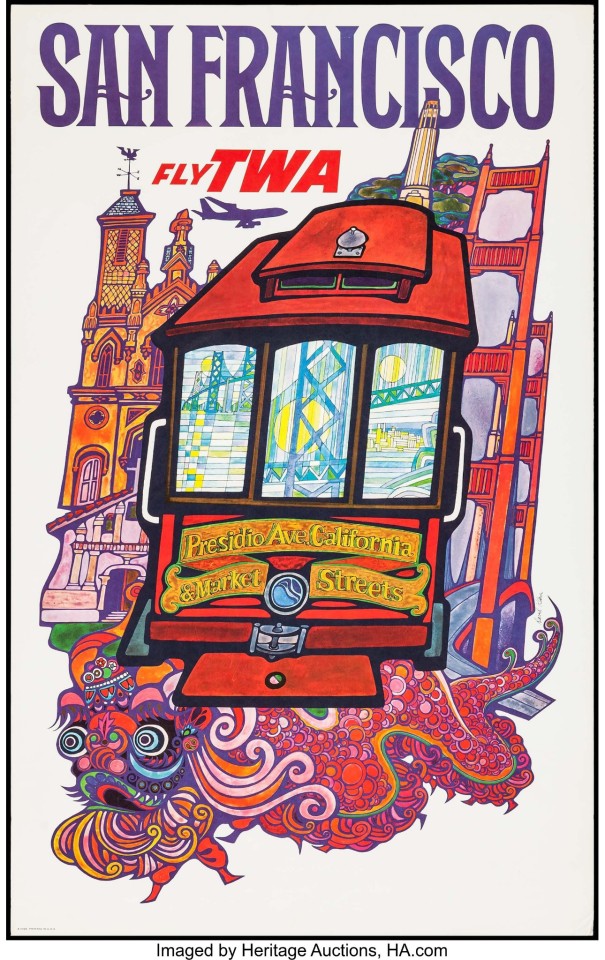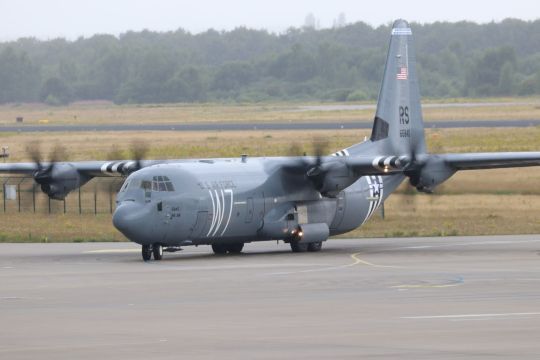#Aviation Market
Text
Latin America Aviation Market: Key Players, Trends, and Dynamics in the Air Transport Industry

The Latin America aviation market encompasses the aviation industry across the countries and territories of Latin America, including Central America, South America, and the Caribbean. This region boasts diverse landscapes, cultures, and economic conditions, all of which contribute to a unique aviation landscape. This article provides an overview of the Latin America aviation market, covering its key players, market dynamics, regulatory framework, challenges, and notable trends.
Market Overview
The Latin America aviation market is a vital component of the global aviation industry, facilitating domestic and international air travel, cargo transportation, tourism, and trade within the region and beyond. With a mix of established airlines, low-cost carriers, charter operators, and cargo airlines, the Latin American aviation sector serves a wide range of passengers and businesses, connecting urban centers, remote communities, and international destinations.
Market Dynamics
The Latin America aviation market is influenced by various factors that shape its growth and development. Key dynamics driving the market include:
Economic Growth and Demographic Trends: Economic growth, urbanization, rising disposable incomes, and increasing population mobility contribute to the growing demand for air travel and aviation services across Latin America. As more people enter the middle class and travel becomes more accessible, airlines experience higher passenger volumes and cargo shipments.
Tourism and Business Travel: Latin America is a popular destination for tourism and business travel, attracting visitors from around the world to explore its cultural heritage, natural wonders, and economic opportunities. Tourism plays a significant role in driving passenger traffic, particularly to countries with renowned tourist attractions such as Brazil, Mexico, and Argentina.
Infrastructure Development: Investments in airport infrastructure, including runway expansions, terminal upgrades, and air traffic management systems, are crucial for accommodating growing aviation demand and improving operational efficiency. Governments and aviation authorities across Latin America prioritize infrastructure projects to enhance connectivity and safety standards.
Regulatory Environment: The regulatory framework governing aviation in Latin America includes national aviation authorities, international aviation agreements, safety regulations, and air traffic control procedures. Compliance with regulatory requirements and adherence to international standards are essential for ensuring aviation safety, security, and operational excellence.
Competitive Landscape: The Latin America aviation market features a competitive landscape with legacy carriers, low-cost carriers, and regional airlines vying for market share and passenger loyalty. Competition stimulates innovation, service differentiation, and route expansion, benefiting consumers with increased choice and affordability.
Key Players
The Latin America aviation market is served by a diverse array of airlines, airports, aircraft manufacturers, and service providers. Some of the key players operating in the region include:
LATAM Airlines Group: Formed through the merger of Chile's LAN Airlines and Brazil's TAM Airlines, LATAM Airlines Group is one of the largest airline conglomerates in Latin America, offering passenger and cargo services across domestic and international routes.
Avianca Holdings: Based in Colombia, Avianca Holdings is a major airline group serving destinations throughout Latin America, North America, Europe, and beyond. Avianca operates a fleet of modern aircraft and provides a comprehensive range of passenger and cargo services.
GOL Linhas Aéreas Inteligentes: GOL Linhas Aéreas Inteligentes is a Brazilian low-cost carrier known for its extensive domestic route network and competitive fares. GOL focuses on serving leisure and business travelers with affordable and efficient air travel options.
Azul Linhas Aéreas Brasileiras: Azul Linhas Aéreas Brasileiras is another prominent Brazilian airline specializing in low-cost and regional flights. Azul operates a diverse fleet of aircraft and serves destinations across Brazil, as well as select international routes.
Aeroméxico: Mexico's flag carrier, Aeroméxico, operates an extensive network of domestic and international flights, connecting passengers to destinations in Mexico, North America, Latin America, Europe, and Asia. Aeroméxico is known for its premium services and strategic alliances with other airlines.
Regulatory Framework
The Latin America aviation market is governed by a regulatory framework that encompasses national aviation authorities, international aviation agreements, safety regulations, and air traffic management procedures. Key regulatory bodies include:
Civil Aviation Authorities: Each country in Latin America has its own civil aviation authority responsible for regulating and overseeing aviation operations within its jurisdiction. These authorities establish safety standards, issue operating licenses, and conduct inspections to ensure compliance with regulations.
International Aviation Organizations: Latin American countries are members of international aviation organizations such as the International Civil Aviation Organization (ICAO), which sets global standards and recommended practices for aviation safety, security, and efficiency. Compliance with ICAO standards is essential for maintaining international air connectivity and safety.
Bilateral and Multilateral Agreements: Latin American countries engage in bilateral and multilateral agreements to facilitate air travel, promote tourism, and enhance economic cooperation with other nations. Open skies agreements, air services agreements, and code-share agreements foster collaboration between airlines and promote route expansion.
Challenges
Despite its growth potential, the Latin America aviation market faces several challenges that impact its operations and development. Some of the key challenges include:
Infrastructure Constraints: Limited airport capacity, inadequate runway facilities, and air traffic congestion in major urban centers pose challenges for accommodating growing aviation demand and improving operational efficiency.
Safety and Security Concerns: Ensuring aviation safety and security remains a priority for Latin American authorities, particularly in light of regulatory compliance, infrastructure maintenance, and evolving security threats such as terrorism and cyberattacks.
Economic Volatility: Economic volatility, currency fluctuations, and geopolitical instability in certain Latin American countries can affect airline profitability, passenger demand, and investment decisions, leading to operational challenges and financial uncertainties.
Environmental Sustainability: Addressing environmental sustainability concerns, such as carbon emissions, noise pollution, and wildlife conservation, is becoming increasingly important for the aviation industry in Latin America. Airlines and airports are exploring sustainable aviation initiatives and alternative fuel technologies to mitigate their environmental impact.
Notable Trends
The Latin America aviation market is characterized by several notable trends that reflect evolving consumer preferences, industry innovations, and market dynamics. Some of the key trends include:
Low-Cost Carrier Expansion: The rise of low-cost carriers (LCCs) in Latin America has democratized air travel, making it more accessible and affordable for a broader range of passengers. LCCs stimulate competition, stimulate demand, and open up new routes, particularly in underserved domestic and regional markets.
Fleet Modernization: Airlines in Latin America are investing in fleet modernization programs to replace older aircraft with newer, more fuel-efficient models equipped with advanced technology and amenities. Fleet renewal initiatives improve operational efficiency, reduce operating costs, and enhance passenger comfort and safety.
Digital Transformation: The digital transformation of the aviation industry is reshaping passenger experiences, operational processes, and business models across Latin America. Airlines and airports are adopting digital technologies such as mobile apps, self-service kiosks, biometric identification, and data analytics to streamline operations, enhance customer service, and optimize resource management.
Regional Integration: Efforts to promote regional integration and connectivity within Latin America are driving collaboration between airlines, governments, and industry stakeholders. Initiatives such as the Single Latin American Sky (SAL) aim to harmonize air traffic management systems, airspace regulations, and aviation infrastructure to facilitate seamless air travel across borders.
Future Outlook
The Latin America aviation market is poised for continued growth and evolution, driven by demographic trends, economic development, infrastructure investments, and technological advancements. Key factors shaping the future outlook of the market include:
Infrastructure Investments: Continued investments in airport infrastructure, air navigation systems, and aviation facilities are essential for accommodating growing aviation demand, enhancing safety standards, and improving passenger experiences across Latin America.
Airline Consolidation and Alliances: Airline consolidation, strategic partnerships, and global alliances will reshape the competitive landscape of the Latin America aviation market, leading to market consolidation, route optimization, and enhanced connectivity for passengers and cargo operators.
Sustainable Aviation Initiatives: Sustainable aviation initiatives, including carbon offset programs, biofuel adoption, and aircraft efficiency improvements, will gain traction as airlines and governments prioritize environmental sustainability and address climate change concerns.
Digital Innovation and Passenger Experience: Digital innovation and technology-driven solutions will transform the passenger experience, enabling airlines and airports to offer personalized services, seamless journeys, and enhanced safety and security measures in response to evolving traveler expectations and preferences.
In conclusion, the Latin America aviation market represents a dynamic and rapidly evolving sector within the global aviation industry, characterized by diverse market players, regulatory frameworks, challenges, and opportunities. With a focus on safety, sustainability, and customer-centric strategies, the aviation industry in Latin America is well-positioned to navigate future trends and drive growth in air travel, tourism, and economic development across the region.
0 notes
Text
Aviation Market Analysis, Share & Growth - Industry Overview | 2030
The aviation market, a vital engine of globalization and economic growth, connects people and goods across continents. This report delves into the dynamic and ever-evolving landscape, analyzing its current size, future growth trajectory, key challenges and opportunities, and the diverse player base.
Market Size, Growth, and Future Outlook:
The global aviation market boasts a colossal size, estimated at a staggering $1.7 trillion in 2023. Experts predict a steady (CAGR) of 4.7%, propelling the market to reach a projected $2.4 trillion by 2030. This growth is fueled by several key factors:
Rising Global Travel Demand: Increasing disposable incomes and the desire for international travel are driving passenger traffic, particularly in emerging economies.
Expansion of Low-Cost Carriers: The rise of budget airlines offering affordable travel options is making air travel more accessible to a wider audience.
E-commerce Growth: The booming e-commerce industry relies heavily on-air cargo for efficient and timely delivery of goods.
Technological Advancements: Innovations in aircraft design, fuel efficiency, and air traffic management are optimizing operations and reducing costs.

Top Leading Players and Emerging Players:
The aviation market is a complex ecosystem with a mix of established giants and innovative players:
Airline Titans: Companies like American Airlines, United Airlines, and Emirates dominate the passenger airline market, with extensive networks and brand recognition.
Cargo Giants: FedEx, DHL, and UPS are leading players in the air cargo segment, offering specialized logistics solutions for businesses.
Aircraft Manufacturers: Boeing and Airbus are the two dominant players in the commercial aircraft manufacturing industry, shaping the future of air travel technology.
Low-Cost Carriers: Airlines like Ryanair and Southwest Airlines have revolutionized air travel with their low-cost model, attracting a price-sensitive customer base.
Growth Opportunities and Latest Developments:
The aviation market presents exciting opportunities for players who can capitalize on emerging trends:
Focus on Sustainability: Airlines and manufacturers are developing and adopting cleaner technologies like electric and hydrogen-powered aircraft to reduce carbon emissions.
Personalized Travel Experiences: Airlines are leveraging data analytics and digital platforms to personalize travel experiences and offer tailored services.
Urban Air Mobility (UAM): The development of electric vertical take-off and landing (eVTOL) vehicles has the potential to revolutionize urban transportation.
Artificial Intelligence (AI) Integration: AI is being used to optimize flight operations, improve air traffic management, and enhance passenger security.

Challenges and Considerations in the Aviation Market:
Despite its promising outlook, the industry faces some key challenges:
Geopolitical Instability: Political tensions and conflicts can disrupt air travel routes and impact demand in specific regions.
Fuel Price Volatility: Fluctuations in oil prices significantly impact airline operating costs and ticket prices.
Airport Infrastructure Constraints: Congested airports and outdated infrastructure can hinder the smooth flow of air traffic, especially in high-demand regions.
Workforce Shortages: The industry faces a shortage of qualified pilots, cabin crew, and maintenance personnel, posing a challenge for sustained growth.
Future Trends and the Road Ahead:
The aviation market is constantly evolving, with several trends shaping the industry's future:
Focus on Digitalization: Airlines are investing in digital platforms and automation to improve operational efficiency and enhance the customer experience.
Data-Driven Decision Making: Airlines are leveraging data analytics to optimize pricing strategies, personalize offerings, and predict maintenance needs.
Collaboration and Partnerships: Airlines and other stakeholders are collaborating to address industry-wide challenges and develop innovative solutions.
Conclusion:
The global aviation sector is a dynamic and crucial sector with immense growth potential. By addressing challenges like infrastructure constraints and workforce shortages, embracing sustainable practices, and leveraging technological advancements, the industry can continue to soar towards a future of efficient, accessible, and environmentally responsible air travel.
#Aviation Market#Aviation Market Size#Aviation Market Share#Aviation Market Revenue#Aviation Market Growth Rate#Future of Aviation Market#Leading Players in Aviation Market#Major Players in Aviation Market
0 notes
Text

Vintage Travel Poster - Fly TWA: San Francisco
Art by David Klein
Trans World Airlines (c.1960's)
#Posters#Travel#San Francisco#David Klein#TWA#Aviation#Fly TWA#Vintage#Art#Trans World Airlines#Russian Hill#Streetcars#Market Street#Chinese Dragons#1960s#60s
57 notes
·
View notes
Note
Do you have any nonfiction that you would recommend if someone was interested in the US Navy/military?
im probably not the right person to ask this bc most of my military knowledge hyperfixation is centered on the ARMY in the American Revolutionary War & World War II. It’s only pretty recently that i got into modern warfare as a topic, so let me just give some indiscriminate recs
Can’t go wrong with David McCullough‘s 1776, which is a great overview of the first year of the revolutionary war + the extremely fraught politics of trying to start a new nation’s military—really illustrates where a bunch of lingering schools of thought in our military originated from.
Another David McCullough shout-out: his The Wright Brothers is an excellent book about the origins of flight, AND it was the book right next to the picture of Ice and Maverick shaking hands on Ice’s bookshelf in TGM. So we know ice has read that one. I think you can’t go wrong at all with any David McCullough. I own like 5-6 of his books and he hasn’t missed once. (His best is John Adams but that’s not mil related)
Ron chernows biography of Washington goes into his military background (7 years' war) a whole bunch, and kind of elucidates how truly fortunate we were to have our nation’s first leader be a military man who really kinda didn’t want to be there. Some really good takes on leadership. Just beware that chernow does have a reputation in the history community for just makin shit up sometimes. If it sounds too cute/quaint to be true, it really might be.
u may be tempted: DO NOT read Brian kilmeade's Thomas Jefferson & the Tripoli Pirates, one of the few navy NF books I've read. I read it b4 I even knew who kilmeade was--didn't matter. it fucking sucks. he uses like 7 sources in the whole book.
Stephen E. Ambrose's Citizen Soldiers is a great WWII NF book about that generation of infantrymen.
The one big Navy NF book I've read recently is (not to brag but my personally signed copy of) Craig symonds' new biography of admiral Chester Nimitz, who was COMPACFLT during WWII's war in the pacific. I got a SHIT ton of professional characterization for Ice from Nimitz' life and this book--Nimitz also worked 18 hour days, was also separated from the love of his life for long periods of time in Hawaii, was also probably acutely depressed, etc.
okay: THOMAS E. RICKS. The Generals is SUCH a good book. Army leadership from WWII up through Iraq and Afghanistan. Focusing on how the Army used to relieve (fire) commissioned officers who couldn't hack it, and that's a huge part of why we won WWII, but somewhere between WWII and Korea, being fired started being super shameful (macarthur's fault if I'm reading it correctly) so mediocre officers didn't get fired and that's why the army has suffered shit leadership in every war since WWII. It's a HUGE thesis that he backs up so well. Would so recommend. I'm also currently reading his FIASCO about the fuck-up of Iraq. Also incredible so far.
Michael O'Hanlon's Military History for the Modern Strategist-- a post Civil War survey of military strategy on the campaign/operational level. Might be a good introduction to US military history, just giving a pretty broad overview of post-CW warfare, so that way you don't pick up a random book about the Korean War and go "wait what was the Chosin campaign again?" Interestingly written and I got to meet him and he wrote "wishing you the best" in my book after I told him I wanted to steal his job at Brookings someday, so admittedly I'm biased.
Lawrence Wright's The Terror Years: From Al-Qaeda to the Islamic State is not strictly military related, but it is one of the best-written and most illuminating nonfiction books I've ever read and I cannot recommend it enough.
For war fiction, my taste is v mainstream: Pat Barker's Regeneration trilogy, Tim O'Brien's Going After Cacciato (imo better than the things they carried), Ahmed Saadawi's Frankenstein in Baghdad, Kevin Powers' The Yellow Birds, Cannot Miss Erich Maria Remarque's All Quiet on the Western Front if you haven't read it, Hassan Blasim's The Corpse Exhibition: And Other Stories of Iraq... For specifically Naval lit: Run Silent, Run Deep is a pretty good classic, and this summer I read the 600-page behemoth The Caine Mutiny, which is about specifically WWII-era naval law... it's a brick. But it won a pulitzer and it's...passable. Kind of interesting at least.
#really can't recommend Lawrence wright Thomas ricks or David McCullough enough. just really well written stuff#otherwise I just read mil/defense news and google everything I don't know#pat barker >>>> regeneration isn't like... gay... but it is definitely gay. I think 2/3 books of the trilogy start out with soldiers fuckin#not top gun#military history#general aviation#book rec#i have no real life marketable skills but i do read a lot 👍
39 notes
·
View notes
Text
10.5cm FlaK 39 engaging low flying British Short Stirlings during Operation Market Garden in September 1944
10 notes
·
View notes
Text
Mastering Precision Sheet Metal Fabrication: Where Art Meets Science
Precision sheet metal fabrication is the artful synergy of craftsmanship and scientific knowledge. Whether it's in the automotive industry, electronics manufacturing, or medical equipment production, precision sheet metal plays a pivotal role. In this blog post, we delve deep into the world of precision sheet metal and explore how this art and science intertwine.
Defining Precision Sheet Metal
Precision sheet metal fabrication is a highly specialized manufacturing process that encompasses various methods of cutting, bending, stamping, and welding metal sheets. The goal of these processes is to produce parts and components to exact specifications and dimensions without compromising the quality of the metal material. These parts are typically used in applications that demand high levels of precision, requiring meticulous control and inspection at every step.
Applications of Precision Sheet Metal
Precision sheet metal finds wide-ranging applications across various industries, including but not limited to:
Electronics Manufacturing: Precise enclosures, panels, and connectors are essential to ensuring the safety and stability of internal components in electronic products.
Medical Equipment: Medical devices often require highly precise components to ensure accurate measurements and operations.
Aerospace Industry: Aerospace demands lightweight, high-strength components, and precision sheet metal is key to achieving this goal.
Automotive Manufacturing: Various components in automobiles, including bodywork, chassis, and engine parts, rely on precision sheet metal fabrication.
The Craftsmanship of Precision Sheet Metal
The manufacturing process of precision sheet metal is an art that marries precision with expertise. It involves critical steps such as:
Design and Planning: Careful design and planning are necessary before commencing fabrication, ensuring accuracy and consistency.
Material Selection: Choosing the right metal material is crucial for the performance of the final product.
Cutting and Stamping: Employing cutting and stamping machinery to shape the metal sheets into the desired form.
Bending and Shaping: Utilizing bending and shaping operations to curve metal sheets into the required shapes.
Welding and Assembly: Welding individual components together to assemble the final product.
Quality Control
The essence of precision sheet metal lies in quality control. Rigorous quality control procedures and inspection methods ensure that every component meets specifications. This includes the use of high-precision measuring tools, visual inspections, and material testing.
Conclusion
Precision sheet metal fabrication is a domain where craftsmanship and scientific knowledge beautifully converge. Its wide-ranging applications, from electronics to aerospace, make it indispensable in our modern world. Through continual refinement of processes and quality control methods, precision sheet metal fabrication will continue to play a pivotal role in supporting our modern way of life and technological advancements. It's a testament to how art and science work hand in hand to create excellence in manufacturing.
#aviation#sheet metal fabrication#sheet metal manufacturing#sheet metal stamping#sheet metal design#sheet metal market#robots#robotics
7 notes
·
View notes
Text

Battlefield V (2018)
#2018#gaming#concept art#aviation#WWII#Battlefield V#Battlefield#Operation Market Garden#Waal#Nijmegen#Holland#Netherlands#Supermarine Spitfire#Mk Va#Focke-Wulf#Fw 190
2 notes
·
View notes
Photo

UK 1985
#UK1985#VECTOR MARKETING LIMITED#ACTION#STRATEGY#SIMULATION#ADVENTURE#BBC#GO#MAZE#HOPPER#STARSHIP COMMAND#ACHETON#AVIATOR#CHESS#MONSTERS#FIREBUG#SNOOKER#MAGIC GARDEN#LABYRINTH#ACORNSOFT#THE SEVENTH STAR#ELITE#FREEFALL#BLACK BOX#GAMBIT
28 notes
·
View notes
Text
People on reddit, tying themselves into knots as they try to explain why Aviation cocktails invariably look terrible in color: It’s supposed to resemble stormy skies! Or the aluminum grey of airplanes back then!
Me: My guys, it’s literally because modern crème de violettes are made with extra (often artificial) colors that mix badly with just about everything else. That’s it. That’s the reason.
#i still maintain my hot take that they're supposed to be pink not blue (or purple or grey or whatever) because guess what?#natural violet dye is a pH indicator!#alcohol#personal#i am still lacking in karma so i can't (yet) shout it in a post there so i have to shout it here sorry#anyway yes i bought a rothman & winter crème de violette (one of the oft-recommended ''good'' ones on the market)#and it's fucking terrible#it's OKAY in an aviation but only because it has other flavors to (mostly) cover it up#it looks and tastes artificial as shit and i had some straight and it had THE NASTIEST aftertaste bleh
2 notes
·
View notes
Text
Last week, Eindhoven airbase received two well-known visitors from the 37th airlift squadron from Ramstein. Well-known visitors because they often fly along with the annual Market Garden commemoration. During this commemoration various countries, that also took part in the airdrops on Ginkelse Heide during world war 2, fly together for letting the paratroopers jump of the transport planes.



http://www.karo-aviation.nl
Given the flight pattern of both C-130J Hercules, we assume that they dropped paratroopers around Ede and then flew on to Eindhoven airbase. A place where they are expected again in September, together with other Allies of that time, for the 2022 commemoration of operation Market Garden on September 17 2022.
#karo aviation#karo-aviation#karo#aviation#aircraft#airforce#avgeek#avgeeks#usairforce#c130#c130hercules#ramstein#eindhoven#market garden#c130J
18 notes
·
View notes
Text
I once noticed that Ryan Reynolds promotes at least one of his company's in his or his wife's movies or videos with quite obvious product placement (such as aviation gin) and now I can't unsee it and it's extremely annoying.
3 notes
·
View notes
Text
IndiGo Becomes World's 3rd Largest Airline By Market Cap, Shares Jump To Record High - News18
On the BSE, InterGlobe Aviation’s shares on Wednesday jumped Rs 175.2 or 4.82 per cent to close at Rs 3,806.85 apiece.
In the last one month, InterGlobe Aviation’s share has jumped 22 per cent, taking the airline’s mcap to over Rs 1,46,000 crore ($17.5 billion) in total value
Shares of InterGlobe Aviation, the operator of IndiGo, on Wednesday hit fresh record high as they rose 5 per cent to…

View On WordPress
#3rd#Airline#cap#High#indigo#indigo market cap#indigo shares#interglobe aviation shares#jump#largest#market#News18#record#Shares#worlds
0 notes
Text
Elevate Your Career with D.Y. Patil University’s Vijay Patil School of Management

At D.Y. Patil University’s Vijay Patil School of Management (VPSM), we are pioneers in tailoring graduate education to the evolving needs of the global marketplace. Our specialized MBA programs are meticulously designed to arm students with the knowledge and skills required to excel in today’s competitive business environment. By combining theoretical depth with extensive practical exposure, VPSM prepares students to lead and innovate across diverse sectors.
Committed to Excellence in Business Education
VPSM stands out as a beacon of advanced business education in India, with state-of-the-art facilities, a faculty comprising industry veterans and academic leaders, and a curriculum that integrates the latest in business theory with real-world applications. Our students gain not only knowledge but also practical skills through interactive sessions, live projects, and internships with leading companies.
Our approach is holistic and designed to foster professional and personal growth, enabling students to develop the leadership qualities essential for success in the global market. Each of our programs aims to cultivate critical thinking, adaptability, and strategic decision-making abilities.
Industry-specific MBA Programs at VPSM
Our MBA programs are tailored to meet the needs of specific industries that are integral to the global economy. Each program leverages deep industry connections and an advanced analytical curriculum to prepare students for the challenges of tomorrow.
MBA in Supply Chain Management Analytics
This course is designed for those who aim to revolutionize logistics, procurement, and operations within companies. India’s growing economy demands efficient supply chains, and our MBA in Supply Chain Management in India prepares students to optimize these critical systems through innovative analytics and management techniques.
MBA in Aviation Transportation Analytics
Similarly, our MBA in Aviation Management focuses on the needs of the aviation and aerospace sectors, offering insights into airport management, airline finance, and fleet management, among other areas. This program is ideal for those looking to soar in a sector that connects markets and cultures across the globe.
MBA in Strategic Marketing & Artificial Intelligence
Our strategic marketing course integrates the latest in digital marketing techniques and artificial intelligence applications to create leaders who can craft compelling marketing strategies in the digital age. This course is designed to empower professionals to drive their organizations’ marketing efforts with precision and innovation.
Why Choose Us?
Choosing VPSM for your MBA means opting for a program that not only delivers advanced business education but also prepares you for real-world challenges across various sectors. Our alumni network, extensive industry partnerships, and dedicated career services work together to ensure our graduates are well-placed to lead and innovate.
Join Us at VPSM
If you are ready to take your career to new heights and become a leader in your industry, explore our specialized MBA programs at D.Y. Patil University’s Vijay Patil School of Management. Learn more about how we can help you achieve your professional aspirations and become a part of the next generation of global business leaders. Visit our website for more information and embark on your journey to success with VPSM today.
#D.Y. Patil University#Vijay Patil School of Management#MBA in Supply Chain Management in India#MBA in Aviation Management#strategic marketing course
0 notes